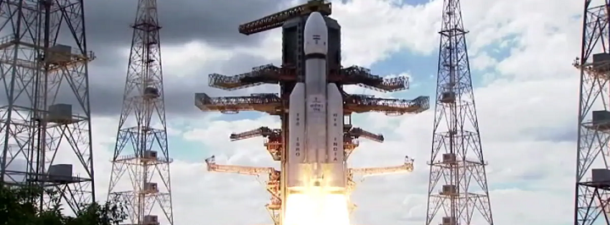The entire design of the lander Vikram’ has been made in a manner that makes sure that it would be able to handle failures, Mr Somanath said during a talk on Chandrayaan-3: Bharat’s Pride Space Mission’.Vikram, the lander of India’s third lunar mission Chandrayaan-3, will be able to make a soft-landing on the Moon’s surface on August 23 even if all the sensors and two of its engines do not work, ISRO chairman S Somanath said on Tuesday.
The entire design of the lander ‘Vikram’ has been made in a manner that makes sure that it would be able to handle failures, Mr Somanath said during a talk on ‘Chandrayaan-3: Bharat’s Pride Space Mission’, hosted by the non-profit organisation Disha Bharat.
“If everything fails, if all the sensors fail, nothing works, still it (Vikram) will make a landing. That’s how it has been designed — provided that the propulsion system works well,” Mr Somanath said.
Chandrayaan-3 blasted into Space on July 14 and it entered into lunar orbit on August 5. There will be three more de-orbiting manoeuvres — exercises to bring it closer to the Moon so that Vikram lands on the Moon’s surface on August 23.
These de-orbiting manoeuvres will be performed on August 9, August 14, and August 16 till its orbit reduces to 100 kmx100 km from the Moon, Mr Somanath said.
A lander propulsion module separation exercise will be taken up subsequently, soon after lander “deboost”, a process that slows down the craft. It will be followed by landing on lunar surface on August 23, he explained.
“We have also made sure that if two of the engines (in Vikram) don’t work this time also, it will still be able to land,” the ISRO chairman said.
“So the whole design has been made to make sure that it (Vikram) should be able to handle many failures, provided the algorithms work properly,” he added.
The biggest challenge before the ISRO team, according to him, is to make a horizontal ‘Vikram’ land vertically on the lunar surface.
Mr Somanath said once the lander separates from the orbiter, it will move horizontally. Through a series of manoeuvres, it will be brought to a vertical stance in order to land safely on the Moon.
This exercise is crucial, as ISRO failed to get its lander to touchdown safely on the Moon’s surface during the Chandrayaan-2 mission.
“The ability to transfer from horizontal to vertical direction is the trick we have to play here. Here only we had the problem last time,” Mr Somanath pointed out.
The challenge is also to make sure that the fuel consumed is lesser, the distance calculations are correct and all the algorithms work properly, the ISRO chief said.
However, the ISRO team this time has made arrangements to ensure that Vikram makes an attempt to land property even if there are some variations in the calculations, Mr Somanath explained.
According to him, the lander will have four payloads: Chandra’s Surface Thermo Physical Experiment (ChaSTE) will carry out the measurements of thermal properties of lunar surface near polar region.
RAMBHA-LP payload will measure the near surface plasma (ions and electrons) density and its changes with time; Laser Retroreflector Array from NASA for accurate positioning measurement of the lander on lunar surface by future orbiters; and Instrument for Lunar Seismic Activity.
The rover named ‘Pragyan’ will have three payloads: The Laser Induced Breakdown Spectroscope (LIBS) will determine the elemental composition of lunar soil and rocks around the lunar landing site.
The Alpha Particle X-Ray Spectrometer (APXS) payload will derive the chemical composition and infer mineralogical composition to further enhance our understanding of the lunar surface.
Listen to the latest songs, only on JioSaavn.com
Spectro-polarimetry of Habitable Planet Earth (SHAPE) is an experimental payload in Pragyan to study the spectro-polarimetric signature of the habitable planet Earth in the near-infrared (NIR) wavelength range.







No Comments
Comments for Space Agency Chief’s Big Statement On Chandrayaan-3 Landing are now closed.